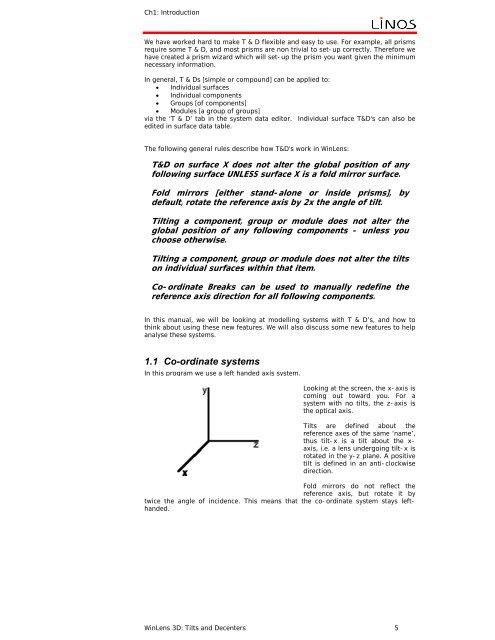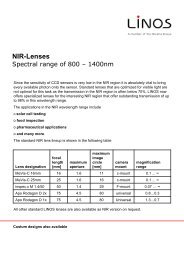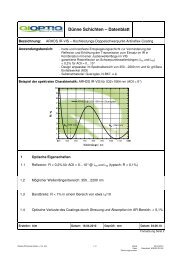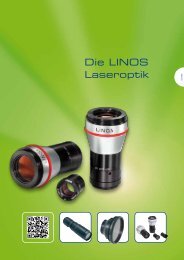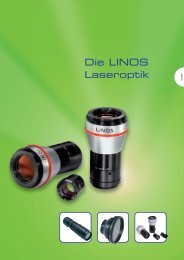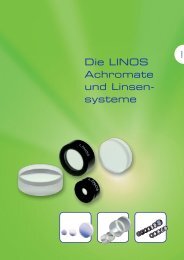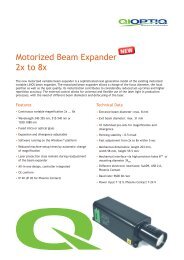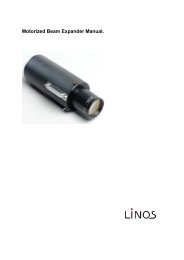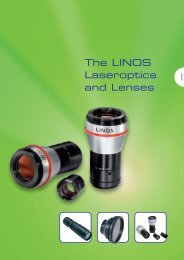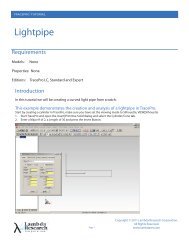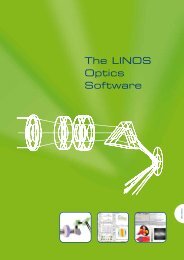You also want an ePaper? Increase the reach of your titles
YUMPU automatically turns print PDFs into web optimized ePapers that Google loves.
Ch1: IntroductionWe have worked hard to make T & D flexible and easy to use. For example, all prismsrequire some T & D, and most prisms are non trivial to set-up correctly. Therefore wehave created a prism wizard which will set-up the prism you want given the minimumnecessary information.In general, T & Ds [simple or compound] can be applied to: Individual surfaces Individual components Groups [of components] Modules [a group of groups]via the ‘T & D’ tab in the system data editor. Individual surface T&D's can also beedited in surface data table.The following general rules describe how T&D's work in <strong>WinLens</strong>:T&D on surface X does not alter the global position of anyfollowing surface UNLESS surface X is a fold mirror surface.Fold mirrors [either stand-alone or inside prisms], bydefault, rotate the reference axis by 2x the angle of tilt.Tilting a component, group or module does not alter theglobal position of any following components - unless youchoose otherwise.Tilting a component, group or module does not alter the tiltson individual surfaces within that item.Co-ordinate Breaks can be used to manually redefine thereference axis direction for all following components.In this manual, we will be looking at modelling systems with T & D’s, and how tothink about using these new features. We will also discuss some new features to helpanalyse these systems.1.1 Co-ordinate systemsIn this program we use a left handed axis system.Looking at the screen, the x-axis iscoming out toward you. For asystem with no tilts, the z-axis isthe optical axis.Tilts are defined about thereference axes of the same ‘name’,thus tilt-x is a tilt about the x-axis, i.e. a lens undergoing tilt-x isrotated in the y-z plane. A positivetilt is defined in an anti-clockwisedirection.Fold mirrors do not reflect thereference axis, but rotate it bytwice the angle of incidence. This means that the co-ordinate system stays lefthanded.<strong>WinLens</strong> <strong>3D</strong>: Tilts and Decenters 5


